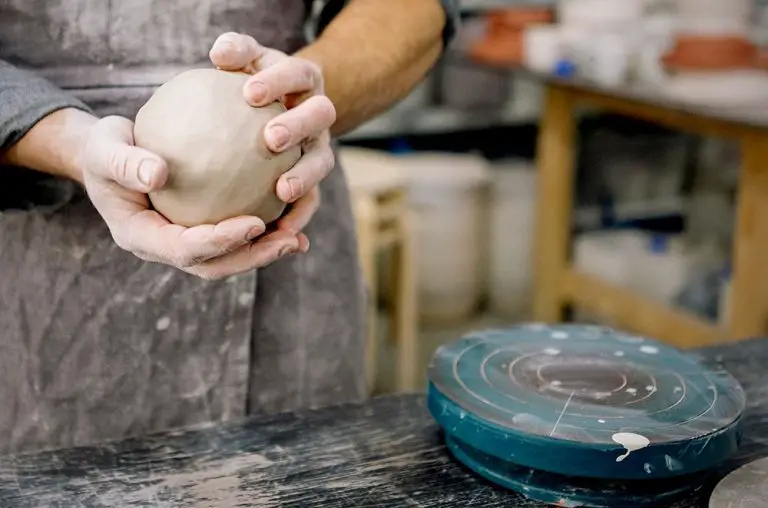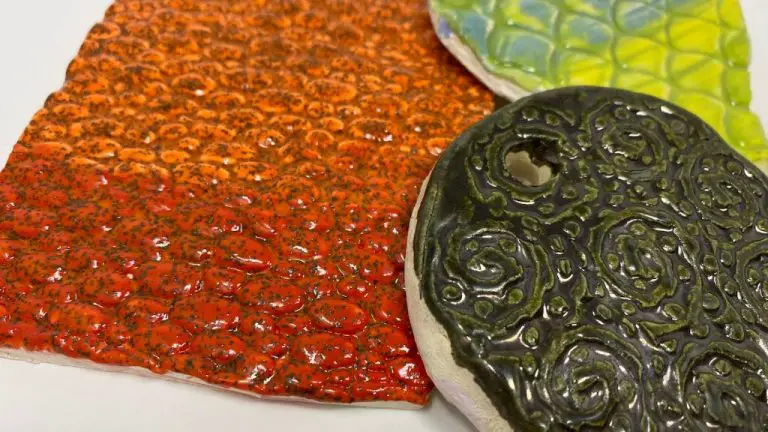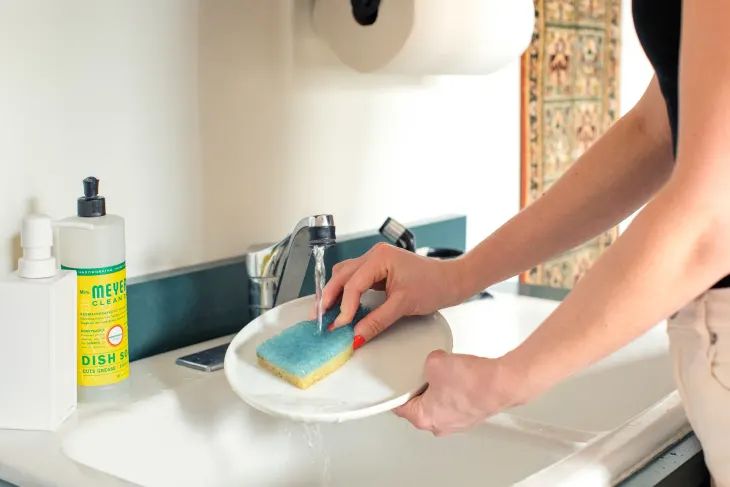What Are The Best Baking Mats?
Baking mats are sheets used in baking to line pans and trays. They provide a nonstick surface to bake on, preventing food from sticking and making cleanup easier. Baking mats have become increasingly popular in recent years due to their convenience and versatility.
The main benefits of using baking mats include:
- Prevent baked goods from sticking – the nonstick surface allows food to release easily.
- Easier cleanup – food does not stick to the mats so there’s less mess and scrubbing pans.
- Even heat transfer – mats help bake goods evenly.
- Reusable – mats are durable and can be used repeatedly.
- Versatile – mats can be used for cookies, cakes, pastries, breads, pizza and more.
With their advantages and conveniences, it’s no wonder baking mats have become a staple in many home kitchens. This guide provides an overview of the different types of baking mats, considerations for choosing one, care and maintenance tips, and recommendations for the best baking mats currently available.
Types of Baking Mats
There are several common types of baking mats to consider:
Silicone Baking Mats
Silicone baking mats are likely the most popular option today. These mats are made from food-grade silicone that can withstand temperatures from -40°F to 480°F. Silicone mats are non-stick, flexible, and easily washable. Top brands like Silpat (https://www.foodnetwork.com/how-to/packages/shopping/product-reviews/best-baking-mats) and Kitzini (https://www.foodandwine.com/best-silicone-baking-mats-7636643) offer high quality silicone baking mats. They provide excellent non-stick performance and often come in multipacks at affordable prices.
Fiberglass Baking Mats
![]()
Fiberglass baking mats are made from fiberglass mesh coated in PTFE for a non-stick surface. They can withstand high temperatures just like silicone mats. Fiberglass mats tend to be thinner but less flexible. They provide a smooth surface for rolling out doughs and baking.
Canvas Baking Mats
Canvas baking mats have a textured cotton canvas surface. They are reusable and washable. Canvas mats work well for baking breads since the texture helps provide an ideal crust. However, they are not as non-stick as silicone or fiberglass mats.
Parchment Paper Mats
Reusable parchment paper mats provide a disposable parchment paper feel. However, they can be washed and reused multiple times. These mats work well for baking cookies and pastries that need to be easily lifted from the mat.
Silicone Baking Mats
Silicone baking mats are one of the most popular and widely used types of baking mats. As the name suggests, they are made of flexible, nonstick silicone that provides a number of advantages over traditional baking sheets or pans.
One of the biggest benefits of silicone baking mats is their nonstick properties. The silicone material prevents baked goods from sticking while baking and allows them to be easily removed once finished. This makes baking cookies, breads, pastries and more a breeze as you can avoid the frustration of scrapping burned bits off baking sheets (https://www.thekitchn.com/the-one-baking-tool-everyone-should-own-249644).
Silicone mats are also highly durable and resistant to heat. Most silicone mats withstand temperatures between -40 to 480°F, making them safe to use in both the freezer and oven. You don’t have to worry about the mat warping or melting even at high baking temperatures. They are designed to be reusable for thousands of cycles.
Cleaning silicone mats is simple since food does not stick to the surface. They can be washed by hand with soap and water or in the dishwasher. Silicone naturally prevents the growth of bacteria, mold and mildew as well. This takes the hassle out of cleaning up after baking.
With their nonstick surface, heat resistance and easy cleaning, silicone baking mats are a convenient, multipurpose tool for any baker’s kitchen.
Fiberglass Baking Mats
Fiberglass baking mats are made from fiberglass mesh coated with a nonstick material like silicone or PTFE (Teflon). The fiberglass base provides durability and structure, while the nonstick coating allows easy release of baked goods.
Fiberglass baking mats are known for their high heat resistance, often rated for temperatures up to 500°F. According to Precision Coating, fiberglass mats with PTFE coating can withstand temperatures up to 600°F before the coating deteriorates (“Advantages of Using PTFE-Coated Fiberglass Fabric as Baking Sheets and Baking Tray Liners”, https://www.precisioncoating-ftb.com/blog/?p=28). This makes them ideal for high-heat baking and cooking applications.
The fiberglass material also provides excellent stability and reduces warping or buckling of the mats. This allows the mats to lay flat and provide even heat transfer during baking. The rigid structure stands up well to repeated use, creating a durable mat that maintains its integrity over time.
Compared to silicone, fiberglass mats tend to be thinner and less flexible but are more resilient. Their high heat tolerance also gives more versatility for different cooking methods. Fiberglass mats are a great option for bakers who want a sturdy, nonstick surface that can withstand intense heat.
Canvas Baking Mats
Canvas baking mats provide a natural, non-stick surface for baking. They are made from untreated, unbleached cotton canvas and offer a reusable alternative to parchment paper. According to this source, canvas mats have an old-fashioned appeal and allow your baked goods to breathe, resulting in a crispy bottom crust.
The breathable nature of canvas also means it does not insulate cookies and prevents overspreading. Canvas mats have good traction and sticking power for dough. They can be cut to size for different pans. Since canvas is a natural fiber, these mats are compostable at the end of their lifespan. With proper care, they can be reused many times before needing replacement.
Parchment Paper Mats
Parchment paper mats are a popular disposable and nonstick option for baking. They are sheets of thick paper coated with silicone to create a nonstick surface. Some key benefits of parchment paper mats include:
- Provides even baking and heat distribution – The silicone coating helps parchment paper mats evenly distribute heat to prevent hotspots or uneven cooking (source).
- Reduces spreading and sticking – Foods are less likely to spread out or stick to parchment paper compared to direct contact with baking sheets (source).
- Easy release and transfer – Foods lift off parchment paper easily for mess-free transferring and plating.
- Quick cleanup – Parchment paper can simply be discarded after baking for fast and easy cleanup.
While convenient, parchment paper mats are disposable and not reusable like silicone or fiberglass mats. They also can’t be used for higher oven temperatures above 420°F. However, they provide an affordable and effective nonstick baking surface.
How to Choose a Baking Mat
When choosing a baking mat, there are a few key considerations to keep in mind to find one that best fits your needs:
- Budget – Baking mats range in price from around $5 for basic options to $20+ for premium brands like Silpat. Determine how much you want to spend based on your baking frequency.
- Types of baking – Consider what you will use the mat for – cookies, cakes, breads, etc. Some materials are better than others for certain tasks. Silicone tends to provide the most versatility.
- Size – Standard sizes are roughly 16 x 11 inches but you can find smaller or larger sizes as well. Make sure to check dimensions to get one that fits your pans.
- Ease of cleaning – Materials like silicone clean up easily, while uncoated fiberglass may require more effort to clean.
- Durability – More expensive mats from reputable brands will last through thousands of uses with proper care.
- Non-stick ability – The best baking mats have non-stick surfaces that rival parchment paper for easy release of baked goods.
- Temperature resistance – Make sure the mat can withstand the oven temperatures you plan to bake at.
Take the time to consider which features are most important for your needs. This will help narrow down the many options to a baking mat that’s practical and useful.
Care and Maintenance
Proper care and maintenance is key to extending the lifespan of your baking mats. Here are some tips:
For cleaning, soak the mats in extremely hot water with a few squirts of grease-fighting or heavy duty dish soap to remove any baked-on oils or residue (source). You can also use a soft sponge or brush to gently scrub. Avoid abrasive scouring pads. Rinse thoroughly and air dry completely before storing.
Silicone mats can be placed in the dishwasher, but hand washing is recommended for longevity. Avoid high heat drying cycles in the dishwasher (source).
For storage, roll up the mats or lay flat to prevent creases. Avoid folding. Store in a cool, dry place out of direct sunlight. Do not place heavy objects on top of the mats.
With proper care, silicone baking mats can last several years. Look for signs of excessive wear like deep scratches, tears or overly frayed edges as indications it may be time to replace the mat.
Top Baking Mat Recommendations
Based on expert testing and reviews, here are the top baking mats to consider:
Silpat Premium Non-Stick Silicone Baking Mat
The Silpat Premium baking mat is made of fiberglass mesh coated with food-grade silicone that can withstand temperatures up to 480°F. It provides a non-stick surface for baking cookies, breads, pastry and more. Pros are that it’s durable, reusable, and easy to clean. Cons are the higher price point.
Kitzini Silicone Baking Mat
The Kitzini Silicone Baking Mat is made of 100% food grade silicone that withstands temperatures up to 460°F. It provides even heat distribution and non-stick baking. Pros are its affordable price and flexibility to roll and shape dough. Cons are that it can be prone to tearing over time.
AmazonBasics Silicone Baking Mat
The AmazonBasics Silicone Baking Mat is a budget-friendly option made from food-safe silicone that withstands temperatures up to 480°F. It provides a non-stick surface for baking with easy clean-up. Pros are the very low price point and Prime shipping. Cons are that it may not be as durable long-term as more expensive brands.
Artisan Silicone Baking Mat
The Artisan Silicone Baking Mat is made of premium food grade silicone that is PFOA free and withstands temperatures up to 500°F. It provides a nonstick surface for baking cookies, macarons, breads and more. Pros are its large size, durability, and high heat resistance. Cons are the premium price.
Hausmann Industries Textured Baking Mat
The Hausmann Industries Textured Baking Mat has a fiberglass core with food-safe silicone coating textured with a waffle pattern. It withstands temperatures up to 480°F. The texture helps baked goods release easily. Pros are even browning and the nonstick textured surface. Cons are that it may tear more easily.
Conclusion
In summary, there are several factors to consider when choosing the best baking mat for your needs. Silicone baking mats are non-stick, reusable and durable but can be prone to stains over time. Fiberglass mats are inexpensive but wear out faster. Canvas mats bring a vintage feel but require seasoning. Parchment paper is not reusable but provides an affordable non-stick surface.
For most home bakers, a basic silicone baking mat will provide the best bang for your buck. Go for a reputable brand like Silpat to ensure even heating and a long lifespan. Look for a thickness of 1/16″ to 1/8″ for durability. Make sure to properly care for and clean the mat to prevent damage and stains.
With the right baking mat like the Silpat Premium Non-Stick Baking Mat, you can achieve consistent, reliable results for cookies, breads, rolls, and more. Invest in a high quality mat and it will serve you well for many years of happy baking ahead.




